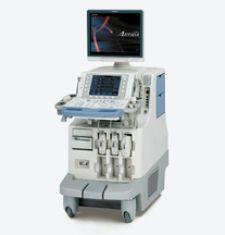
Toshiba’s new Aplio Artida 4D ultrasound system is designed for physicians to quantify global and regional LV function, including LV ejection fraction. The system is also one of the first to track myocardial motion and display myocardial motion in 3D, allowing the user to obtain angle-independent, quantitative and regional information about myocardial contraction. With this imaging system, physicians have the ability to identify wall motion defects and improve cardiac resynchronization therapy (CRT) using pacemakers.
With Artida’s real-time multi-planar reformatting capabilities, physicians can reportedly quantify global and regional LV function, including LV ejection fraction, volume and severity of regurgitation. Arbitrary views of the heart not available in 2D imaging are also obtained that can help with surgical planning, according to the company.


 March 19, 2025
March 19, 2025 








